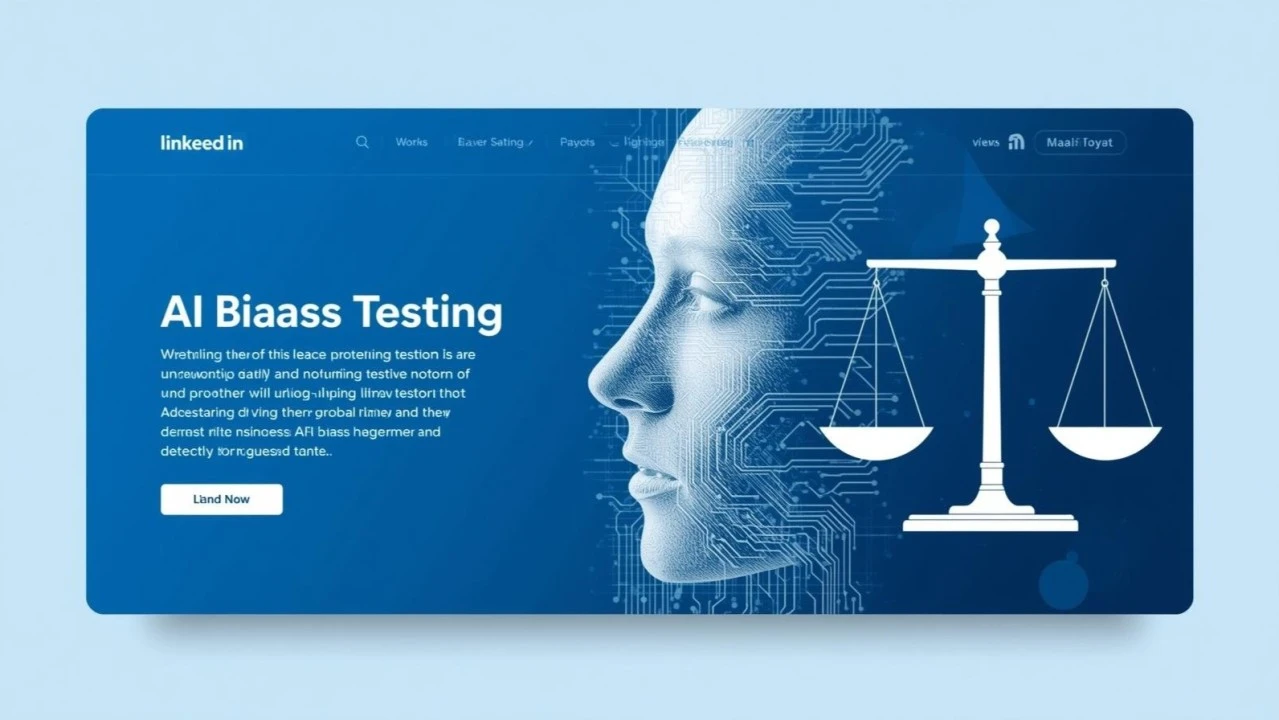
Testing Bias in AI Engines: Why QA Leaders Must Lead the Ethical Charge
Artificial Intelligence (AI) has shifted dramatically from being a niche innovation to becoming an integral part of our everyday lives and professional environments. It now plays a pivotal role in various tasks, including drafting emails, powering sophisticated customer service platforms, optimizing complex supply chains, and influencing critical financial decision-making processes.
However, there is an unsettling reality we must confront: AI can exhibit bias. This bias does not stem from the intentions of engineers or developers; rather, it emerges from the data we use, the algorithms we design, and the underlying human assumptions that shape them.
As a leader in Quality Assurance (QA), I consider the presence of bias in AI systems to be one of the most pressing and intricate testing challenges of our time. Unlike conventional software, which operates on predictable and fixed rules, AI systems learn through data and experience, adapting and evolving in response. This adaptive nature can inadvertently magnify patterns that not only reflect but also entrench existing societal inequities.
⚠️ Where Bias Begins
The origins of bias in AI are often subtle, lurking in the very systems we trust to deliver objective results. Here are some specific areas where bias can manifest:
- Training Data: The data used to train AI models significantly influences their performance. If a model is predominantly trained on data that reflects a single demographic or user type, it will struggle to comprehend and effectively serve users from different backgrounds. Example: A facial recognition system trained almost exclusively on images of lighter-skinned individuals may perform poorly when tasked with recognising individuals of darker skin tones.
- Algorithmic Design: The design of algorithms can reinforce pre-existing biases. When models are crafted to fit dominant patterns in the training data, they can inadvertently perpetuate inequality. Example: An algorithm that prioritises certain characteristics—like specific educational backgrounds—may disadvantage talented individuals who don’t fit the norm but bring unique skills to the table.
- Feedback Loops: AI systems learn from their outputs, creating a cycle where small biases can magnify over time. Example: If a biased hiring algorithm favors specific resumes, it narrows the pool of candidates and reinforces historical biases, ultimately leading to a homogeneous workforce that fails to represent diverse perspectives.
🧪 Why QA Must Step Up
Testing AI requires a significant shift in approach. It’s no longer sufficient to focus solely on binary outcomes of pass or fail. Instead, QA professionals must delve into complex, sometimes uncomfortable, questions that challenge the very fabric of how we evaluate performance:
- Does this model achieve equitable outcomes across different demographics, regions, and user scenarios?
- Are we measuring fairness in addition to accuracy? If a model correctly predicts outcomes for a majority demographic, does it mean it is suitable for all groups?
- Can we provide clear explanations for the decisions made by AI systems, and are we equipped to defend these decisions in the face of scrutiny?
QA professionals are uniquely situated to lead this inquiry, as we deeply understand risk management, edge cases, and the importance of maintaining user trust. We must leverage this expertise to scrutinize the implications of AI technologies.
🛠️ How to Test for Bias in AI
Implementing bias testing necessitates a transformation in both our mindset and methodologies. Here are five actionable strategies that QA teams can start utilizing immediately:
- Diverse Test Data: Move beyond traditional paths of success to include a wider range of test cases. This means intentionally incorporating edge cases, minority groups, and scenarios that do not represent the average user.
- Fairness Metrics: Develop metrics that specifically evaluate AI performance across various demographic subgroups, not just the overall accuracy.
- Explainability Tools: Utilise frameworks that enhance the interpretability of AI models. This may involve implementing methodologies like LIME (Local Interpretable Model-agnostic Explanations) or SHAP (Shapley Additive exPlanations).
- Red-Team Exercises: Conduct stress-testing through simulated adversarial scenarios that challenge ethical boundaries.
- Continuous Monitoring: Understand that biases can evolve as societal norms change and data grows. Implement mechanisms for ongoing validation and regularly reassess AI performance.
🚀 The Call to Action
To effectively address bias in AI, testing must be integrated early in the development process—this shift-left approach is akin to prioritising defect detection in traditional software environments. Bias testing should not merely be a checklist item at the final stages of a release cycle. Instead, it must evolve into a core mentality that influences design, development, and deployment at every phase.
Ultimately, our mission extends beyond simply identifying bugs; it revolves around sustaining and enhancing trust. We have a responsibility to ensure that AI systems are not only proficient in their tasks but also fair, transparent, and accountable in their operations.
As QA leaders, we possess the tools, insights, and ethical imperative to spearhead this initiative. Let’s establish ethical testing as the new gold standard in our industry and create AI solutions that benefit everyone, not just the majority.
💬 Let’s keep this meaningful conversation alive. How is your team tackling bias testing in AI?
